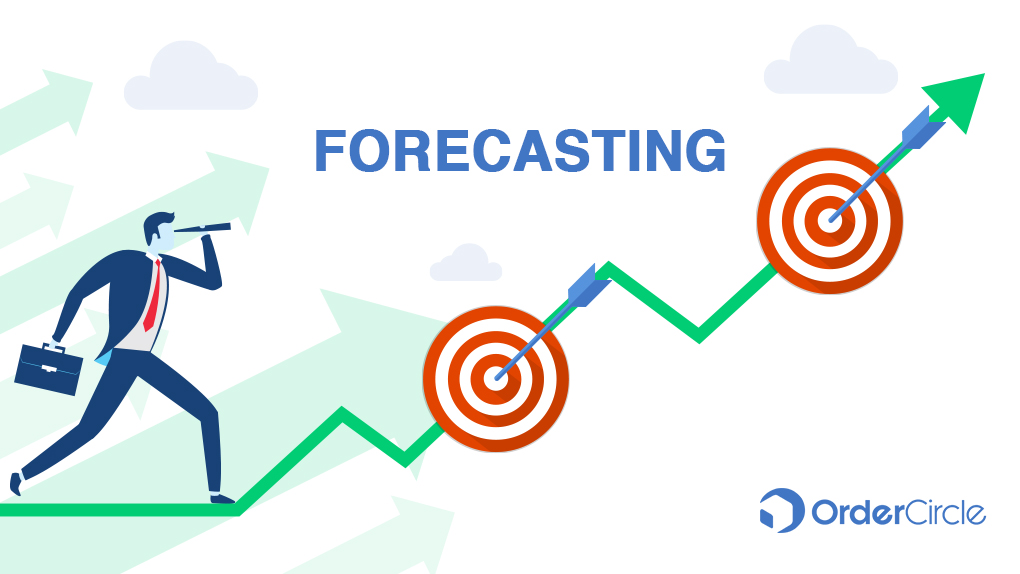Forecasting
Hasan Nasir

Forecasting means making estimates about the future. Based on these estimates, one carries out the required planning. Forecasting is based on data, opinions, and experience.
In business, a company generally forecasts demand. Based on this demand forecasting, they plan the other business functions. This includes planning for the purchase of material, production, marketing, distribution, and inventory management. All these together determine the profitability of the business.
When it comes to inventory management, forecasting plays a critical role. A seller always aims to meet the customer demand on time. For this, he should maintain an optimum inventory level. However, excess inventory increases costs. Here, demand forecasting becomes crucial. Demand forecasting helps in maintaining enough inventory to meet demand and avoid overstocking.
Different Methods of Forecasting:
Forecasting is usually carried out with past data. For example, a hospital forecasts the demand for beds based on patients in the last five years. Sometimes, forecasting is also made based on a particular event. For example, companies forecasted the demand for masks due to the spread of the covid-19 pandemic.
Forecasting methods can be broadly classified under the following two categories:
1.Quantitative Methods of forecasting:
These methods use numbers for analysis and estimation. Statistical methods are used to analyze past and present data. Here, the seller forecasts a variable (say demand) based on available data (say purchases).
Under the quantitative forecasting methods, one finds trends or patterns based on historical data. Thus, these methods have a limited scope of bias as they involve factual data. However, such methods do not prove helpful in case of limited data availability. Further, the success of these methods depends upon one’s ability to identify the patterns accurately. Also, these methods assume that past patterns are likely to continue in the future.
Few examples of quantitative methods are time series, regression analysis, etc.
Time Series
This is a simple forecasting method. It assumes that history is a good indicator of the future. Thus, it analyses data points at different time intervals. Based on this, it gives long-term trends. This is done through the calculation of various averages and data extrapolation.
This method considers past data for analysis. However, it does not consider factors such as market conditions, economic cycles, etc.
Regression analysis
This method predicts the future value of one variable based on other variables. It is a relational method of forecasting. Say, for example, ice cream’s demand depends on various factors like weather, competition, social trend, etc. Hence a regression analysis of these variables can help better predict the ice-cream demand for the upcoming season.
2.Qualitative Methods of forecasting:
Qualitative forecasting uses judgment and theories of experts. A qualitative forecasting method is used when past data is not available. Thus, it overcomes the limitations of the quantitative methods. Such methods are helpful for mid-term forecasting. However, such methods offer subjective results. Therefore, they have a limitation of inclusion of bias. Few examples of qualitative methods are market research and the Delphi method.
Delphi Method
In this method, forecasting is done by asking questions to an expert panel. A facilitator initially asks some questions to this panel. Based on the members’ replies, he prepares another round of questions. By doing this, he gives every person a chance to review their earlier answers. This process continues till the panel arrives at a consensus about the solution.
Market research
This method makes forecasts based on the reactions of the customers. Companies do market research through surveys, polls, or product testing. The researcher gets an idea about the acceptance of a product or service through these techniques.
Why is forecasting important?
Forecasting helps predict the future with reasonable accuracy. Let us understand its importance in supply chain management:
Assists in planning:
Forecasting gives a fair idea about what can be expected in the future. It helps in assessing the customer demand. Based on this, a seller can plan the inventory levels to be maintained. Forecasting also helps predict any change in customer demand. Based on this, the seller can make relevant changes in the inventory.
Helps reduce costs:
Forecasting gives a fair idea about the inventory required to be maintained. Based on the demand, a seller can stock an adequate quantity of items that are in high demand. For low-selling items, he can limit purchases. This results in savings of various costs such as inventory purchase, storage, and inventory holding.
Strengthens business relationships:
Forecasting helps a seller meet the customer demand on time. This helps in increasing customer satisfaction. Further, with an idea of demand, the seller can maintain a relationship with suppliers. He can carry out regular purchases and make timely payments.
Conclusion
Forecasting is an important practice for any business. It guides the management to plan the business activities. It also helps in the efficient use of the available resources. Forecasting helps in all the divisions, including inventory management. It facilitates the maintenance of adequate inventory while meeting customer demands. It also helps in cost reduction. There are various quantitative and qualitative methods available for forecasting. One must choose a method suitable to one’s business requirements.
